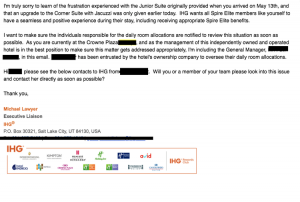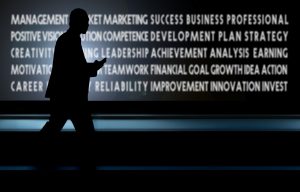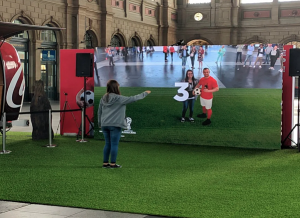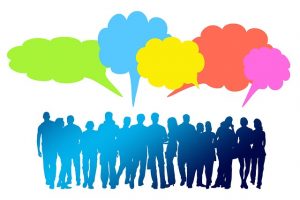Virtual worlds and immersive technology are not just for consumer campaigns. Here’s how to begin your B2B metaverse marketing journey.
The metaverse will be a 13-trillion-dollar opportunity by 2030, according to a recent report by Research and Markets. That’s a huge market attracting enterprise tech companies and investors alike.
There’s a plethora of emerging technologies, along with daily news updates about these immersive technologies’ promise and potential downside. Although much hype surrounds gaming and consumer-focused virtual spaces like Fortnite and Meta’s Horizon Worlds, a large portion of that $ 13 trillion pie will be dedicated to business communications.
B2B marketers can no longer dismiss virtual worlds and immersive technology as tactics solely dedicated to consumer campaigns. Business marketers are embracing these technologies and successfully and strategically deploying them to hit KPIs.
“How?” you might ask. Keep reading as I provide an overview of the metaverse from a business communications perspective and call out the best use cases being done today.
Follow the money
To get to the heart of what enterprise B2B marketers need to care about when it comes to the metaverse, we need to follow the money. Looking at who is investing in immersive technologies will help us predict the industry’s future.
Coinscapture listed the following as the top three companies investing big in the metaverse:
- Microsoft.
- Meta (Facebook).
- Google.
Developer Updates identified the top five players building the metaverse as:
- Microsoft.
- Epic Games.
- Meta (Facebook).
- Nvidia.
- Google.
A few thoughts come to mind as I contemplate these lists from a B2B marketing perspective. Although building an immersive workplace solution, Meta will never succeed in the enterprise space. They are one of the least trusted companies out there today, and I can’t see any enterprise wanting to risk the trust of their employees, partners, and customers. As for Epic Games, they are building immersive experiences at scale, reaching billions of consumers. However, their core demographic is younger and not well-suited for the typical B2B campaign.
So that leaves us with Google and Microsoft. Google has been relatively quiet regarding their efforts to leverage immersive technologies after they attempted launching Google Glass and Google Lively. (Any other geeks out there remember that project?)
On the other hand, Microsoft has been loud and proud with many announcements outlining how they are building the immersive workplace of the future. Their latest product offering, Microsoft Mesh, promises to combine Microsoft Teams, the enterprise-preferred communications and collaboration platform, with immersive capabilities like attending meetings as your avatar and easily collaborating in a metaverse-like environment.
I predict that there will be some new announcements about Microsoft Mesh this October during their flagship developer conference, Ignite, and I can’t wait!
In the meantime, I have found three primary areas where immersive technology is effectively helping B2B marketing teams.
3 of the best use cases for the B2B metaverse
1. Events, events, events
Events have been a mainstay in B2B teams’ marketing mix. Despite the global pandemic, this will not change. Post-COVID events need to be hybrid and include both in-person and online options to meet the demands of attendees with varying levels of comfort with travel.
Enterprise travel budgets have never been tighter, and justifying an in-person conference experience has become more challenging. Coupled with the need to provide a hybrid experience, those opting to stay home need to be presented with something more engaging than the typical 2D conference experience. This new dynamic creates many challenges for the event marketer that immersive technology can help tackle. If you’re looking for tips on leveraging XR and immersive technology for your next event, check out my post, 10 Things to Consider When Using XR for Your Event.
Many new enterprise-ready, immersive event platforms and technologies have been developed with new players entering the field almost every day. One promising start-up, TouchCast, has built an interactive 2.5D enterprise event solution that integrates with Microsoft Teams. They are building an impressive list of partners such as Microsoft, Accenture and Nvidia and are one of the first to offer “Metaverse-as-a-Service.” To see their platform in action and to access some compelling keynote presentations on the future of the metaverse, visit the on-demand version of their Metaverse Summit.
According to Ricky Houck, TouchCast’s senior enterprise strategist:
“There’s already so much technology being underutilized by enterprise companies. We can build off the innovation from 3D world building for gaming and entertainment, expanding their use cases into virtual events, sales, training, and many other B2B use cases.”
2. Learning, education and training
And speaking of training, there’s quite a bit of education that must go into most B2B campaigns. Potential buying committees need to understand extremely complex products and services fully. Post-purchase, they need to know how to use the product. Here, customer success and sales enablement teams lean heavily on training materials to help with upsell opportunities.
Research has proven that immersive technology can help improve learning outcomes and information recall. A study by the University of Maryland concluded that people remember information better if it is presented in a virtual environment. Global IT firm Accenture has capitalized on this trend by creating an immersive office space they have dubbed The Nth Floor.
One of the first examples of the promise of Microsoft Mesh, The Nth Floor, integrates with Microsoft Teams to allow Accenture employees to seamlessly create avatars, visit virtual 3D locations and collaborate in a virtual environment. The company has successfully used the virtual office for onboarding more than 150,000 employees and is excited about the outcome. Jason Warnke, Senior Managing Director, Global IT and Digital Experiences Lead at Accenture shared in a recent blog post:
“We found that a majority of learners (70%) forgot training content within 24 hours and virtually all (90%) forgot after a month. Interestingly, a study also found immersive VR instruction offered a path to achieve 33% higher learning retention when compared to video.”
Currently, The Nth Floor is limited to Accenture employees only. However, I did find an employee video of the experience shared on YouTube.
It clearly is built using Microsoft’s AltSpace platform and sheds light on a future where anyone using Microsoft Teams will also have easy access to AltSpace.
3. Mind-blowing networking
With fewer business prospects traveling, building relationships virtually becomes essential. Connecting on an emotional level over standard video conferencing is really hard. There are those awkward silences, the moments when you’re talking over each other and that awful feeling of watching yourself on video.
Immersive tech can save the day by providing tools that help promote connection like a shared 3D environment, avatars that can facilitate self-expression, and opportunities to have fun!
One of the best virtual networking events I attended was iHeart Media’s virtual Billie Eilish concert in conjunction with CES. The iHeart team went all out and provided a stellar live-streamed broadcast that included Ryan Seacrest, Dua Lipa and Billie Eilish.
Instead of just holding a more traditional 2D broadcast, they leveraged the 3D platform from Vatom to provide an immersive experience for hundreds of invited VIP guests. This business event targeted iHeart media’s big advertisers and top branding executives and brought the fun while at the same time enabling true networking to take place.
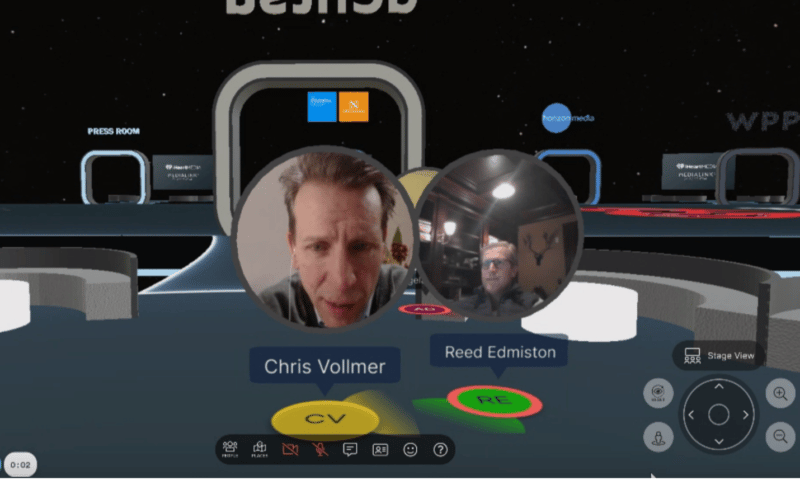
Instead of an anonymous, graphics-heavy avatar, the platform overlaid live webcam video of each attendee. This allowed me to instantly recognize other attendees and colleagues and engage in conversation without wondering who I was chatting with. It also saved me the time of customizing an avatar and made entering the 3D venue frictionless.
Where to start
These three areas are great places to begin your metaverse marketing journey. Robust educational opportunities and active communities are cropping up around the globe to help support innovative marketers looking to produce breakthrough campaigns and communications. I teach XR for communications at the University of Oregon, and they offer a Master’s Degree in Immersive Strategic Communications.
You can also attend industry conferences that house the latest information on new marketing technologies, like The MarTech Conference this month. On Thursday, September 29, I’ll be presenting How marketers can make sense of the metaverse alongside fellow MarTech contributor Tim Parkin and MarTech editor Chris Wood. It’s sure to be a lively discussion, and I hope you can join us.
There are also more informal interest groups, like my monthly XR Pub Crawl for Marketing and Comms professionals where we explore the latest immersive platforms and examine them through the lens of marketing and communications.
Finally, if you need specialized help building an immersive strategy, experienced consultants are just waiting to roll up their sleeves.
The post Top 3 marketing use cases for the B2B metaverse appeared first on MarTech.
(16)

